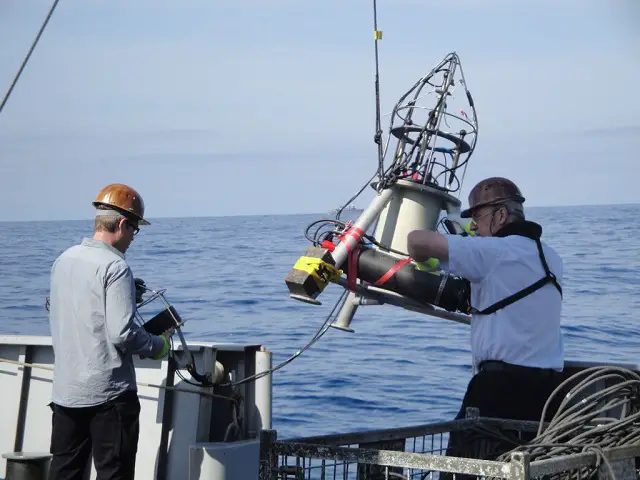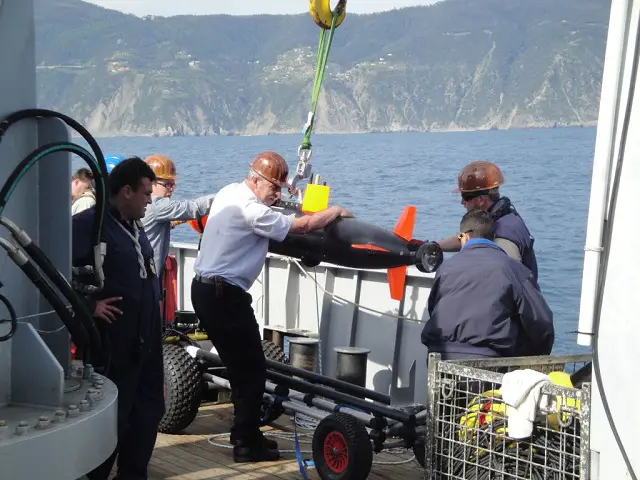Breaking news
Atlas Elektronik demonstrates underwater information technology through acoustic network.
| 2014
 An underwater acoustic modem is being prepared to land on the sea bottom. The electronics are located in the central cylindrical housing. The cage on the top is a protection for hydrophones, used to listen to underwater soundings. The main acoustic transducer is held by the scientist standing left. This device will later float atop of the lander and emits the signals for the acoustic data transmission. It has a range up to eight nautical miles. The whole assembly is called "bottom node" as it serves as a relay station in the acoustic underwater network. |
|||
The high
point of the project was the practical demonstration of the technology
in May 2014. In the Mediterranean off La Spezia, between Genoa and Pisa,
it proved possible to set up and successfully operate a large mobile digital
network under the water surface. With a total of 16 communication nodes,
the two successfully developed methods were demonstrated at sea to observers
from the various nations. For these trials, the research ship “Planet” of WTD71 was used to deploy the autonomous un-derwater vehicle “SeaCat” of the company ATLAS ELEKTRONIK. This robotic mini-submarine scanned the seabed with its sonars and immediately reported the location of submerged ob-jects of interest, e.g. wrecks, to the underwater network. Via a gateway buoy in the communication network, these data were received by acoustic means and forwarded to a shore station by radio. |
|||
 For these trials, the research ship “Planet” of WTD71 was used to deploy the autonomous un-derwater vehicle “SeaCat” of the company ATLAS ELEKTRONIK. |
|||
Thanks
to the key technology developed in the RACUN project, a significant basis
has been created for underwater communication, with the prospect of achieving
further advances in the utilization and exploration of the oceans. RACUN is being carried out by a consortium consisting of various European companies and institutes under the lead management of ATLAS ELEKTRONIK. The project partners include FWG, L3 Communication ELAC Nautik, Fraunhofer FKIE, Develogic, FFI, Kongsberg, FOI, SAAB, TNO, CSSN, the University of Padua, WASS and Cetena. The project supervision team, comprising representatives of the participating nations, is headed by WTD 71/FWG. |
|||



























